The best of both worlds
The ‘dream luxury dive vacation’ often comes down to two primary preferences – land-based resort or dedicated dive yacht – and when it comes to Wakatobi, the answer is both, as Walt Stearns explains.
Wakatobi’s Resort in southeast Sulawesi provides divers and snorkelers with a unique opportunity to discover Indonesia's best coral reefs and marine life while also enjoying all the perks of a luxury resort, including beach time, fine dining, spa treatments and impeccable guest services. And, by combining a stay at the resort with a one-week voyage on the luxury dive yacht Pelagian, they can broaden their horizons and add an additional dimension to the Wakatobi vacation experience.
Wakatobi can officially be described as way off the beaten track, far away from traffic noise and pollution and at least 100 miles away from any other divers, but thanks to its private 70-seat turbo-prop charter flight (flying Mondays and Fridays), you can be whisked from Bali to the resort’s purpose-built airstrip in less than three hours, followed by a short boat ride to the resort itself.
Welcome To Wakatobi
At Wakatobi, a collection of beachfront bungalows and oceanfront villas overlook the waters of a private marine reserve that encompass some of Indonesia's most-protected and pristine coral reefs. Both divers and snorkelers can enjoy these sites, as a bulk of the surrounding underwater formations rise to within a few feet of the surface, creating ideal conditions for viewing with mask and snorkel, along with chances for divers to perform long multi-level profiles that often reach beyond the one-hour mark.
Daily diving activities begin with two-tank morning boat excursions that return guests to the resort in time for lunch. Guests have the option of making an additional single-tank afternoon boat dive, and night dives by boat are scheduled according to demand.
Once you’re settled in, you are assigned a dive storage and staging area (for shore diving) with a number and a large plastic crate for your gear. When the day’s plan includes, for example, the two-tank morning and night dive, your gear will be there and ready to dive when you step on board. This goes for just about everything else, including camera equipment – why carry it when they will eagerly do it for you.
Another nice feature is that it is common for the boats to return to the jetty in between the first and second dive, giving divers a chance to stretch their legs, or for late risers to catch the second dive. This flexibility, combined with the House Reef, allows guests to create an almost-custom boat and shore dive schedule.
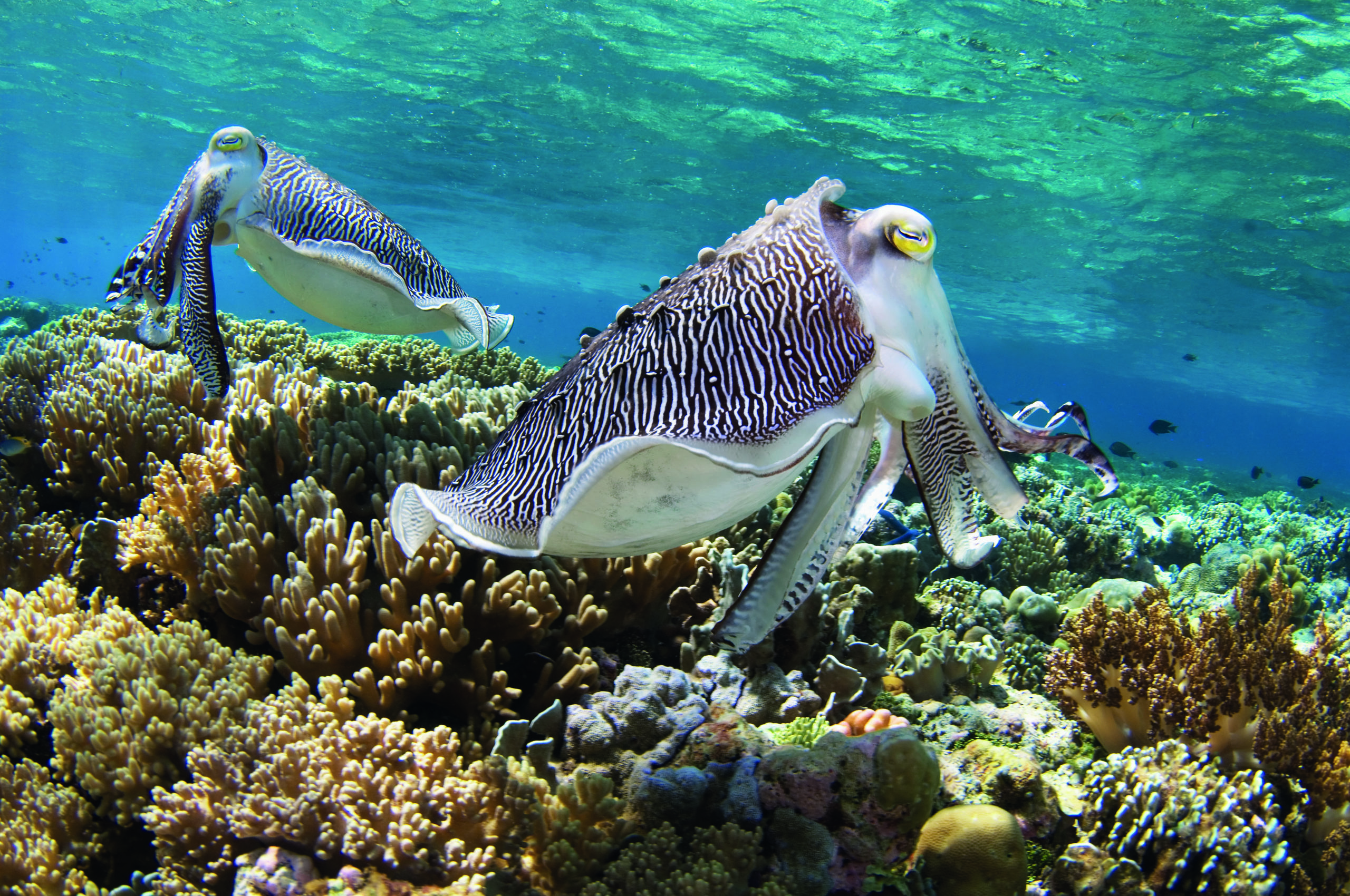
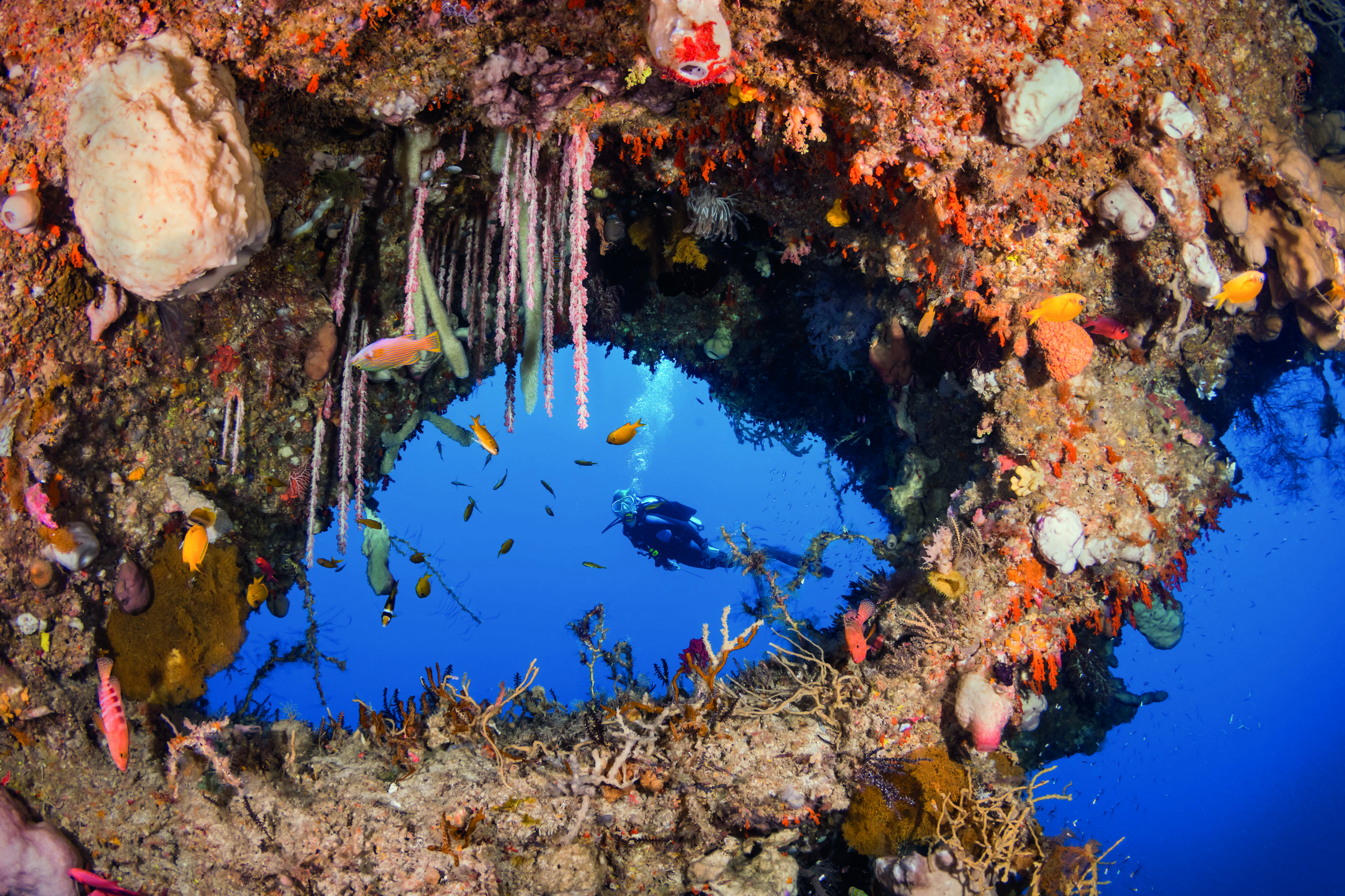
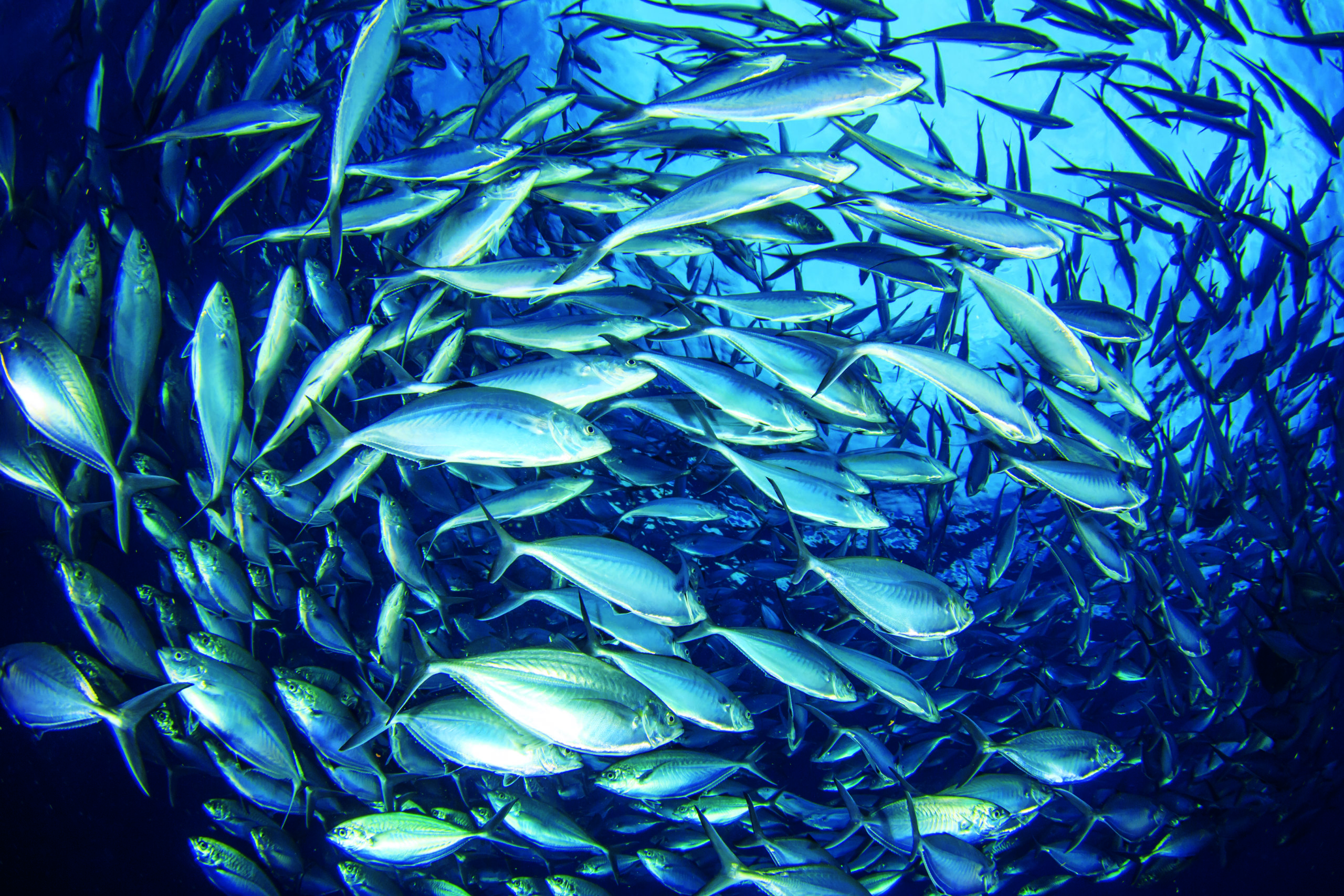
In my book, the thing that can break or make a great dive experience is the boat. When it comes to this, Wakatobi’s core fleet of seven (two are reserved for private charters only) dive boats are enormous vessels measuring between 60 feet to 75 feet in length. Locally crafted, each boat is designed specifically for diving with a copious amount with deck space with ample seating, space for camera equipment, no matter the size.
While they may not be fast, they are impressively stable on the water (almost like standing on a dock) providing an enhanced comfort level that is further elevated by overhead protection from sun and rain nearly full-length of the vessel.
The most-trademark feature of all is that Wakatobi likes to see that their guests have plenty of elbow room by keeping the number of divers and/or snorkelers on board (outside of the boat’s standard three-man deck crew, plus the typical two to four dive guides) down around ten to 12, 14 max.
While sites like Blade, Coral Hill and Fish Wall are the farthest from the resort, the majority of the dives sites are less than a half-hour boat ride away. Conditions at the sites themselves are mostly benign, and even more timid and less-athletic divers will enjoy themselves, as there are rarely big seas to contend with. Instead, a collection of surrounding reefs and sheltering islands create consistently calm to mild sea states at dive sites, and deliver brilliant visibility in the 100-foot-plus range.
The number of cataloged and mapped sites accessible to their day boats number well into the high 40s. And each are extremely engaging in their own way with profiles that start a few feet from the surface with abrupt contours toppling down into the depths. With reef contours of this nature, it's easy to perform multi-level dives well over an hour each, one after another, without going into decompression.
This brings up another trademark of Wakatobi – expect every boat dive to run 70 minutes in length. While you have the option to end the dive sooner for reasons of getting low on air, or getting cold, if you don’t need or want to, your guide is going to keep on going. Besides, spending that latter portion of dives off-gassing in the shallows can often be the most-interesting part of the dive, as the tops of the reefs are just as vibrant as they are deeper down.
During the surface interval, in addition to snacks, water and beverages like coffee, tea or hot chocolate, guests are given refreshing hand towel infused with water and lemon grass. Having one those offered at the end of a 70-plus minute dive on a beautiful, pristine reef, affirms life is good.
Much More Than Just Diving
In addition to diving and snorkelling, guests can try water sports such as kayaking, paddle boarding and wake boarding, relax with indulgent spa treatments, and broaden their interests with cultural presentations such as Indonesian cooking classes. The Wakatobi staff takes pride in delivering the highest levels of personal service by not just meeting requests, but by always making the extra effort to learn and anticipate each guest's needs.
Meals are served at the waterfront restaurant, and can also be enjoyed in the privacy of a bungalow or villa, or for special occasions in a romantic setting on the beach.
Many visitors comment on the exceptional quality and variety of the food created by the resort's culinary team. In addition to serving ever-changing offerings of international and Indonesian dishes, the chefs are able to accommodate special requests and dietary requirements.
A Different Class Of Liveaboard
In addition to the resort, Wakatobi also operates the Pelagian, a 118-feet luxury dive yacht that cruises through a broader swathe of the bio-diverse Wakatobi archipelago and the southern portion of Buton Island. The yacht's seven-day itineraries and seasonal ten-day trips cover an exciting and diverse range of underwater environments, from steep walls perforated by overhangs at Karang Kaledupa and Karang Kapota atolls to unique muck diving in Buton’s Pasar Wajo Bay, and the magnificent reefs, dramatic vertical drop-offs and pinnacles near Wangi Wangi and Kaledupa Islands.
Pelagian is configured to hold a maximum of ten divers between five extra-comfy accommodations resembling those on private luxury yachts than the typical cabins found on liveaboard dive boats. Each of the cabins features ensuite bathrooms and showers, along with the extra floor space needed for relaxing, reading and dressing.
For those seeking an even-more-upscale experience, Pelagian’s master suite is one of the largest and most-luxurious I’ve ever seen on a dive liveaboard. This suite spans the full width of the vessel and occupies the entire forward portion of the main deck, providing both privacy and easy access to all parts of the yacht. Amenities include walk-around king-size bed, a spacious lounge with a love seat, and an entertainment center fitted with a huge flat-panel HD TV and Blueray DVD player. The bathroom is contemporary and features a spacious dressing area and top-of-the-line rainforest shower and vanity fittings.
To ensure five-star service, the Pelagian is staffed by a crew of 12, which includes dedicated stewards and an executive chef who creates fine dining experiences on a daily basis.
One of the added touches that gave me a bit of a chuckle is how the crew hangs every diver’s wetsuit/dive skin out to dry after each dive; better yet, they are folded and placed at the aft fantail bench seat with dive booties below prior to each dive. Talk about pampering.
The dive team provides detailed briefings and handles all logistics of gear transfer back and forth between the yacht and its two custom-fabricated dive tenders, which comfortably whisk divers to each site. The tenders are 18-foot RIBs equipped with double 60HP outboard engines, tank racks and one of the sturdiest deck-mounted stainless steel boarding ladder systems for divers to climb back on board I have ever seen in a RIB. With max passenger count at ten, the number of divers per RIB (not counting the dive guide and driver) is divided accordingly, either split evenly or with six in one, and four in the other (especially if the four are photographers).
Guides work to provide appropriate levels of in-water support as requested, and are also keen experts at locating rare marine subjects. Because dives take place at either shallow-water muck sites or on structures with vertical reliefs that allow multi-level profiles, it's common to enjoy bottom times of 70 minutes or more, and up to four dives a day, including night dives.
Like nitrox? No problem. Pelagian is equipped with a trio of Bauer compressors and a hearty Nitrox Technologies system. For more specialized charters and those looking to do extended-range activities, Pelagian can provide custom nitrox and trimix mixes, as well as full oxygen fills and sorb for rebreather divers.
Off To The A Tolls
The Pelagian embarks on its cruises from the resort and day one includes one or more afternoon warm up dives on favorite sites within the marine preserve. Overnight, the boat then heads to the massive reef atolls of Karang Kaledupa and Karang Kapota, which are home to some of the region's most-colorful and dramatically contoured reefs.
The tops of these formations are thick with dense and diverse coatings of both hard and soft corals, while the adjacent slopes and walls that plunge into the depths showcase an equally broad assortment of vibrant soft coral trees and gorgonians resplendent in red, orange, pink and yellow hues. With visibility that typically exceeds 100 feet, these sites serve up dramatic big-picture views, and are often visited by blackfin barracuda, sea turtles and schools of eagle rays.
Along with panoramic seascapes, the reefs here also contain a wealth of small and cryptic creatures. Some of the best critter hunting takes place among the sea whips that cover the slopes and walls. These long, sometimes spiraling strands are a haven for whip coral gobies and small shrimp. And a highlight of any Pelagian cruise is the chance to find pygmy seahorses. This area is home to bargibanti, Denise's and pontoh’s pygmy seahorses. The Pelagian’s dive guides are especially good at locating the white pontoh’s, which shelter among the halimeda algae. Once found, these small creatures make great subjects, whether you view them through the lens of a camera, or an underwater magnifying glass.
Mucking About
The middle of Pelagian's itinerary typically places it on the southeastern side of Buton Island for an entirely different flavor of diving not found among the rest of the Wakatobi archipelago – muck diving. Here inside Buton’s Pasar Wajo Bay is a highly productive variety of muck environments, from gray and brown silt and rubble habitats to white sand slopes with small coral gardens. Among the sites usually visited are Cheeky Beach, Banana Beach and In Between.
These feature gradual slopes from the shoreline down to 100ft, with sand and gravel bottoms covered with a bit of light sediment that can be easily stirred up by a misplaced fin. A neophyte muck diver might wonder what all the fuss is about—until they take a closer look. The first sighting could be the mottled red face of a reptilian snake eel peeking out from the sand.
With luck, there might be a wonderpus octopus out and about, flowing across the sea floor with its signature undulating motions. Closer looks may reveal Coleman shrimp atop fire urchins, the neon eyes of alien-like peacock mantis shrimp, or lanquid shrimp gobies keeping house with their alpheid shrimp roommates, who seem to do all the work of keeping the burrow clean.
Among the highlights of Pasar Wajo Bay are, of course, the pier dives, and Pelagian has three to choose from, with Asphalt Pier topping most guests’ favorite list. Despite a look of seeming abandonment, this structure is the island’s primary terminal for loading Bituman, a natural form of asphalt that is quarried on the island. Around the front of the pier and at depths of 12ft-50ft among clusters of pilings, divers can find a menagerie of characters that includes shrimp gobies, frogfish, leaf scorpionfish and ornate, robust ghost, banded pipefish and much more.
As the name implies, New Pier is the most-recently built landing dock in Pasar Wajo Bay. It is similar in configuration to Asphalt Pier, with depth profiles that run from 14ft-50ft around the base of the pilings, and reach about 50 feet out in the sand. The pilings are prime hunting grounds for finding blue ribbon eels, ringed pipefish and spiny devil scorpionfish, while the adjacent debris field is a good place to hunt for octopus and gobies, which take refuge in discarded shells, cans and bottles.
Without a doubt, the bay's signature dive takes place at Magic Pier. The site can be productive by day, with marine life similar to the other piers. The real magic begins near dusk, when colorful mandarinfish emerge to perform their intricate courtship and mating rituals. In addition to these nightly performances, the pier is populated by a menagerie of invertebrates, from cuttlefish and blue-ringed octopus to flatworms and nudibranchs. It's also a key area for finding frogfish and twin-spot lionfish.
Reefs, Walls And Pinnacles
On the way back south to home base at Wakatobi resort, the Pelagian completes the loop with a few more stops at the coral-rich shallows, slopes and steep drop-offs near Wangi Wangi Island, Hoga, and Kaledupa Island. In these waters, many reef profiles rise to within 4ft-6ft of the surface, creating opportunities for very long multi-level dive plans.
A stand-out site near Wangi Wangi is Komang Reef. This elongated sea mound is alive with vibrant growths of soft corals and large sponges nurtured by the currents.
This stand-alone structure is swarmed by fish life, and on tide changes it may be visited by rays, tuna, trevally and blacktip sharks. Aptly named Fishmarket is a wall with an adjacent pinnacle known for the high numbers of schooling fish it attracts, including a rather huge school of blackfin barracuda. The site's unique terrain combines a steep wall with three deep ravines and the detached pinnacle that rises to within 30ft of the surface.
On the way to and from the resort, Pelagian may stop at other sites on the outer edge of day-boat range, such as the seamounts of Blade. This unique formation is made up of a row of parallel knife-edged pinnacles that are connected by a lower ridge, giving the entire structure the appearance of a serrated knife blade set on edge.
It is just one of the many memorable sites that divers will experience aboard Pelagian. And by combining a cruise with a stay at Wakatobi Dive Resort, guests can experience the best that Indonesia has to offer.
Guests also have day-and-night access to the House Reef, which has been called the world's best shore dive
Pelagian is configured to hold a maximum of ten divers between five extra-comfy accommodations resembling those on private luxury yachts than the typical cabins found on liveaboard dive boats
Because dives take place at either shallow-water muck sites or on structures with vertical reliefs that allow multi-level profiles, it's common to enjoy bottom times of 70 minutes or more, and up to four dives a day, including night dives
Top Five Dives - There are 43-plus named dive sites around Wakatobi Resort, each exceptional in its own way. This makes narrowing a list of favorites a somewhat subjective task, but there are some sites that rise to the top of most every visitor's must-do list.Aptly-named Zoo is known for its abundance and diversity of marine life. The site itself begins with a shallow coral garden very suitable for snorkeling that rolls down a steep slope to depths well past 100ft. The reef's staghorn, scroll corals and seafans are havens for a range of macro subjects from frogfish and leaf scorpionfish to pygmy seahorses, ghost pipefish and the unique mushroom pipefish, often found among the wavy tentacles of mushroom corals. A close inspection of the numerous barrel sponges will produce one or more hairy squat lobster. Zoo turns into a special place at night as nocturnal animals such as cuttlefish and bobtail squid come out for the hunt, and numerous species of lionfish scour the reef, including the elusive twinspot lionfish. Another favorite with critter watchers and macro photo buffs is Teluk Maya, which features a sloping reef profile similar to Zoo, but with more of a bowl shape that creates a large sand-bottomed amphitheater. Adding to the site’s topographic diversity is a vertical drop-off adjacent to the sandy basin that plummets straight down from a depth of 78ft, and is riddled with deep overhangs. For critter watchers, in addition to a resident school of batfish, Teluk Maya is great for a variety of pipefishes including newly discovered species of pygmy pipehorse, the odd Pegasus seamoth, as well as a number of invertebrates - and that’s just the top 60ft. There's no shortage of walls in Wakatobi waters, and many of these vertical ramparts start as shallow as a mere foot or two from the surface and plunge well below depths of 300ft. Some of the most dramatic are found at the Sawa Reef system. Two perennial favorites in this area are Cornucopia and Lorenzo’s Delight, which was named after Wakatobi’s founder Lorenz Mäder. Like most sites on the Sawa reef, both begin with a shallow coral flat 4ft-6ft deep, then drop with vertical abruptness into the void. The ‘Great Wall of Cornucopia’ as it is often called features a multiple of overhangs dripping with soft corals. At Lorenzo’s Delight, the signature trait is the outsized red sea fans, some with a circumference large enough to cover a living room floor. The site known as Roma always takes top billing and for a lot of reasons. This large seamount rises to within 6ft of the surface and is topped by a beautiful grove of potato coral. To one side there is a huge area of pavona coral following a downward grade. To the other, the profile takes a more-sudden drop-off fringed with table corals, soft corals and fans. In between are large barrel sponges and turbinaria corals, one of which is a massive formation 50 feet across that resembles a rose when viewed from above. As for marine life, if it lives in this region of Indonesia, you’ll likely find it here. Farther afield, roughly an hour by boat is Blade. The underwater topography of this site is unlike any other, as it is made up of a series of small open-water seamounts fused together to form a narrow, elongated ridge that rises up to within a few feet from the surface, all connected by a lower ridge. Viewed from the side, the formation’s coral and sponge-covered profile resembles the edge of a giant serrated knife blade. Changing your perspective to looking down from above will reveal the extremely narrow nature of the formation, which is just a few feet across, with both sides dropping precipitously into the deep blue.
Did you know? - Wakatobi was built from scratch – the resort generates its own power, and produces its own freshwater. It even built its own airstrip to make it more-accessible.
Speak the local language - Bahasa Indonesia is the national and official language of the country. While English is widely spoken in the resorts, it is good to know a few phrases: Good morning – Selamat pagi Good afternoon – Selamat sore Goodbye – Selamat tinggal Please – Silahkan Thank you – Terima kasih You’re welcome – Terima kasih kembali Excuse me - Permisi
WHAT YOU NEED TO KNOW - Wakatobi, Indonesia Getting there Many airlines around the world offer flights into Denpasar, Bali, often from a hub like Singapore or Jakarta, and from here it is just a short hop to the resort. Wakatobi Dive Resort’s Bali-based concierge staff can arrange all details of overnight or extended stays in Bali, and are on-hand from the moment you land in Bali and pass through immigration, ready to assist you through baggage claim and customs, and organise ground transportation. For details, email: office@wakatobi.com When to go While there are some regional differences, Indonesia broadly has two distinct seasons – dry season (April to October) and wet season (November to March). Currency Indonesia’s currency is the Rupiah, but resorts and liveaboards accept payment in most major currencies and by credit card. Entry requirements Visitors from North America can get a 30-day travel visa on arrival, you just need to have a valid passport with at least six months remaining, and a return air ticket. Visas cost US$35. Electricity 230-240 volts, 50 cycles AC. The Maldives Aggressor II has 110 volt and 220 volt at the camera charging and computer stations, but for the use of 110 in other areas, bring USA 110-to-220 twin-pin socket adaptors
Photographs by Walt Stearns
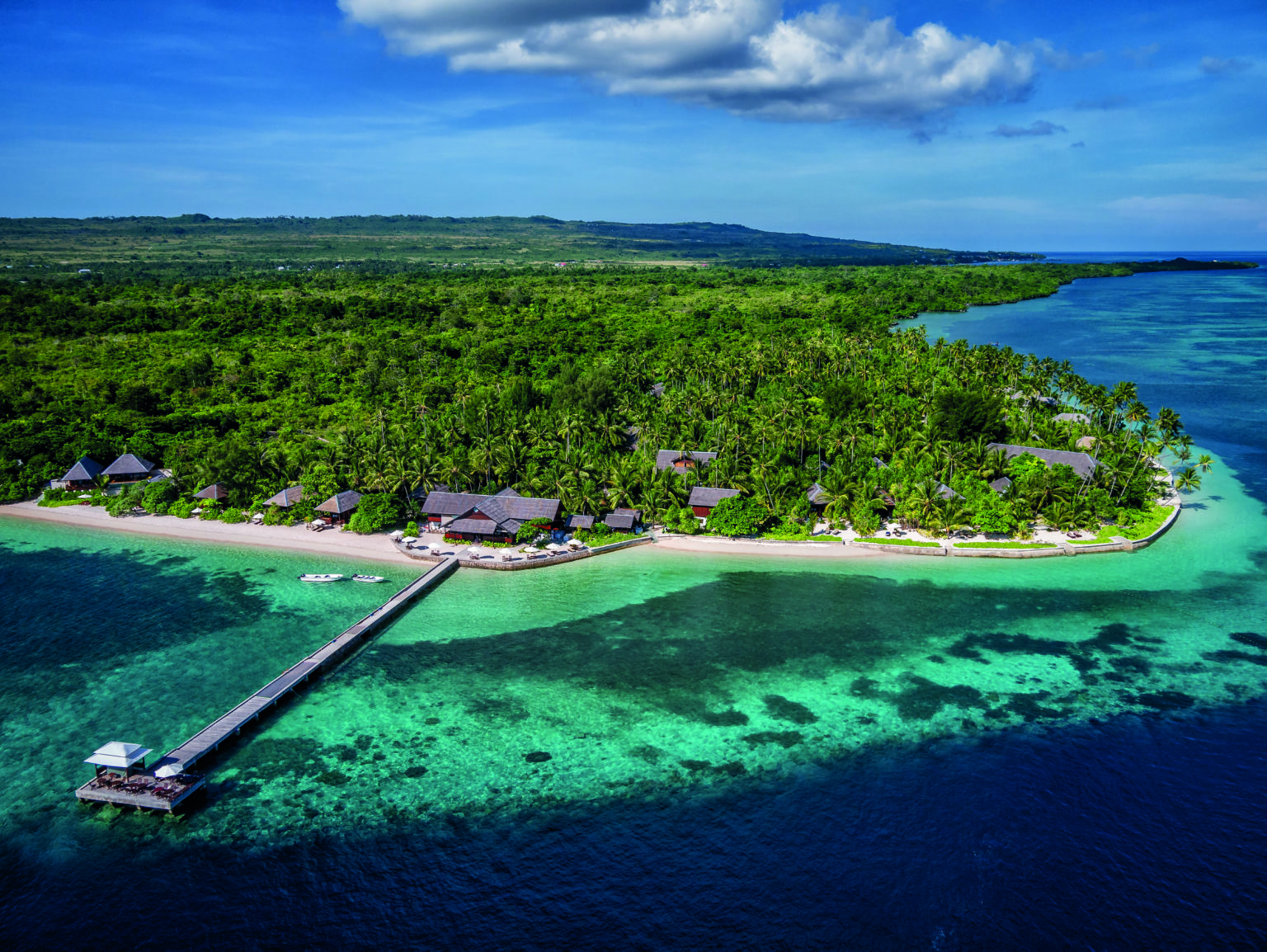
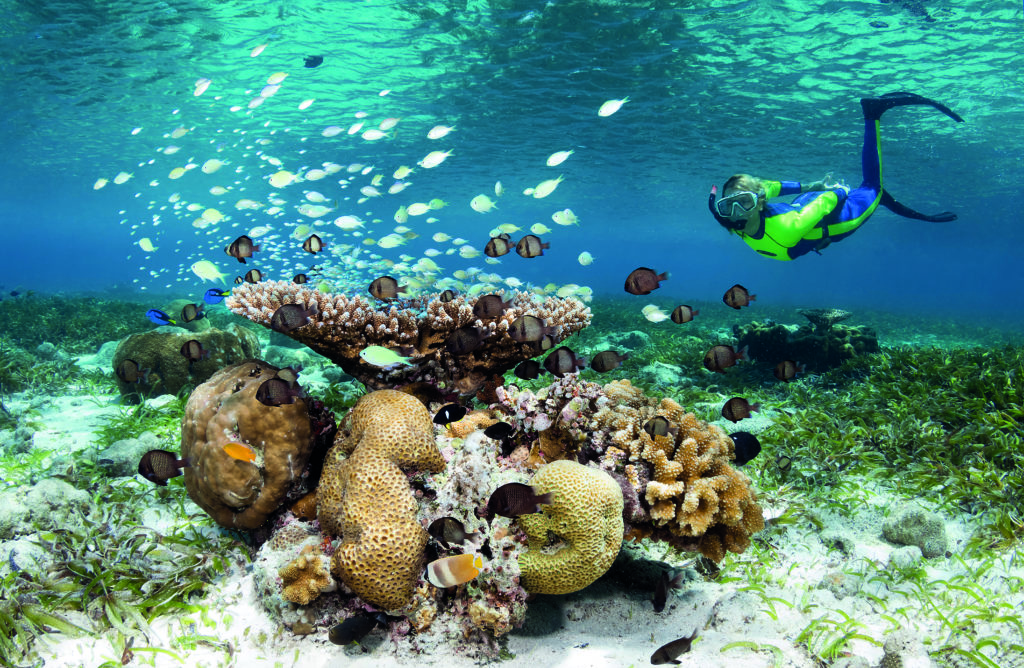
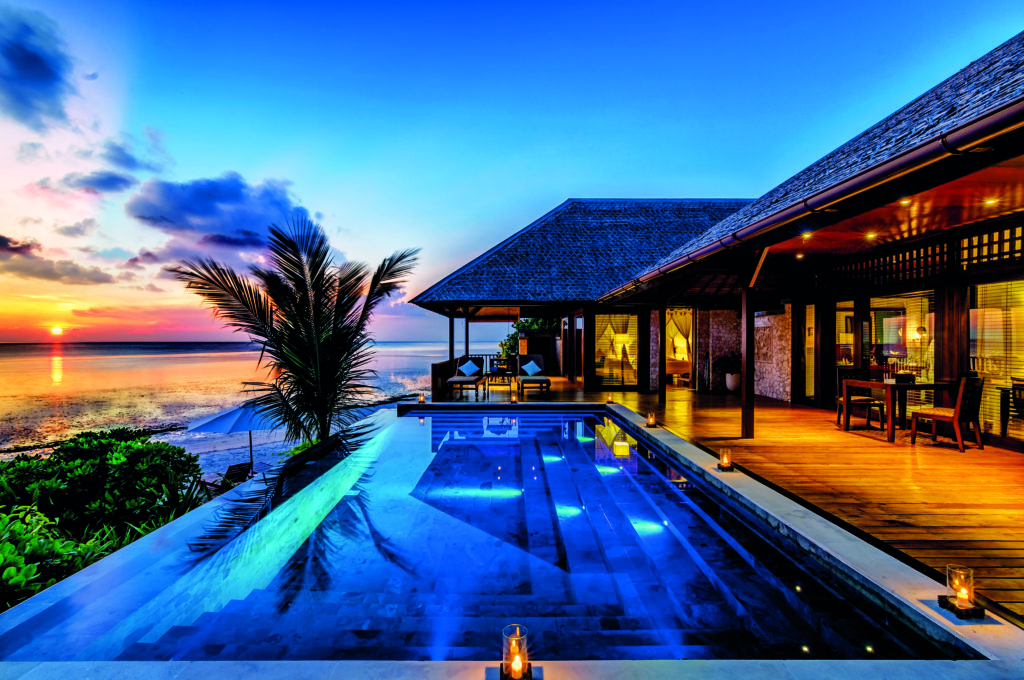
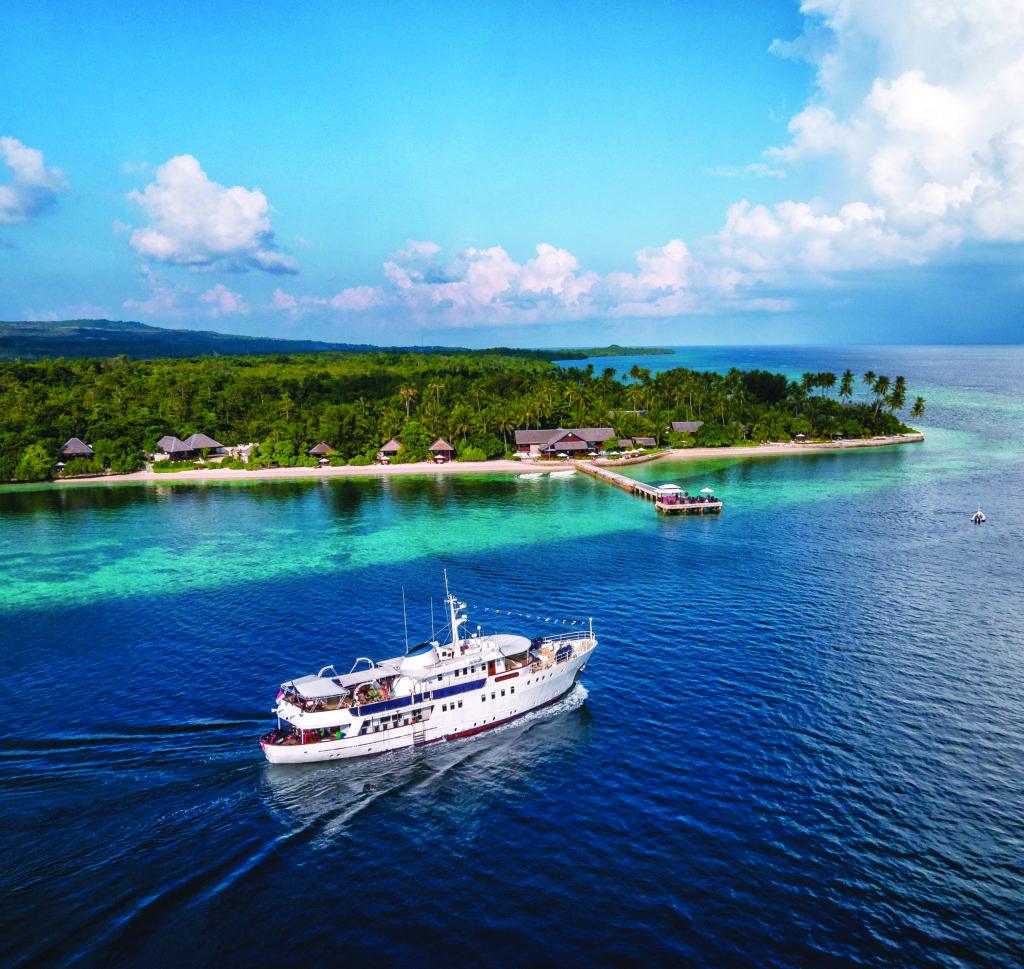
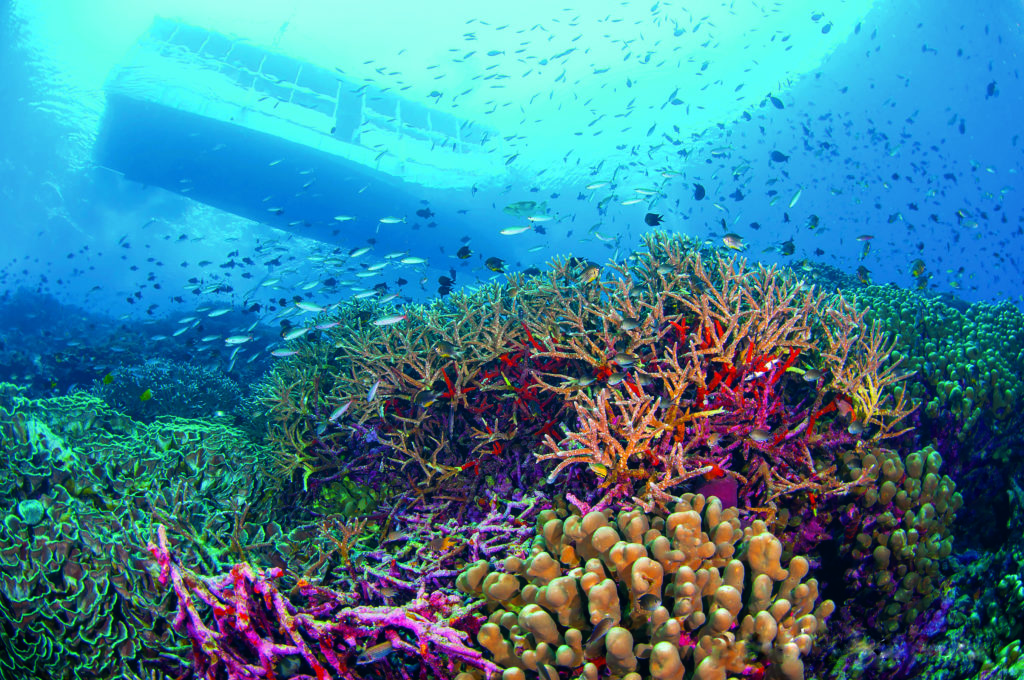
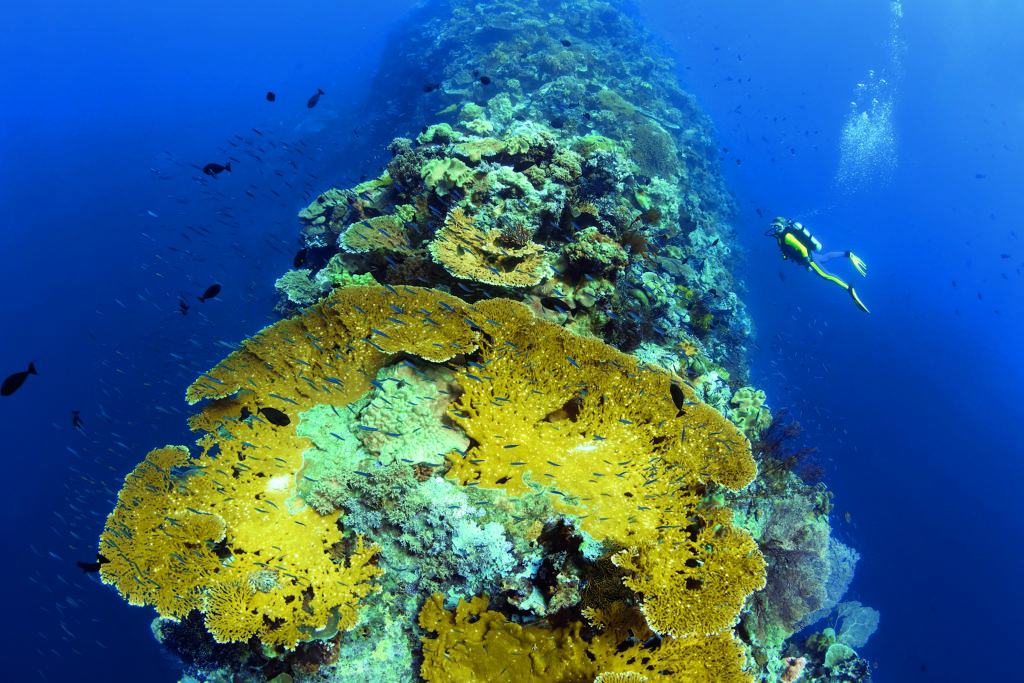
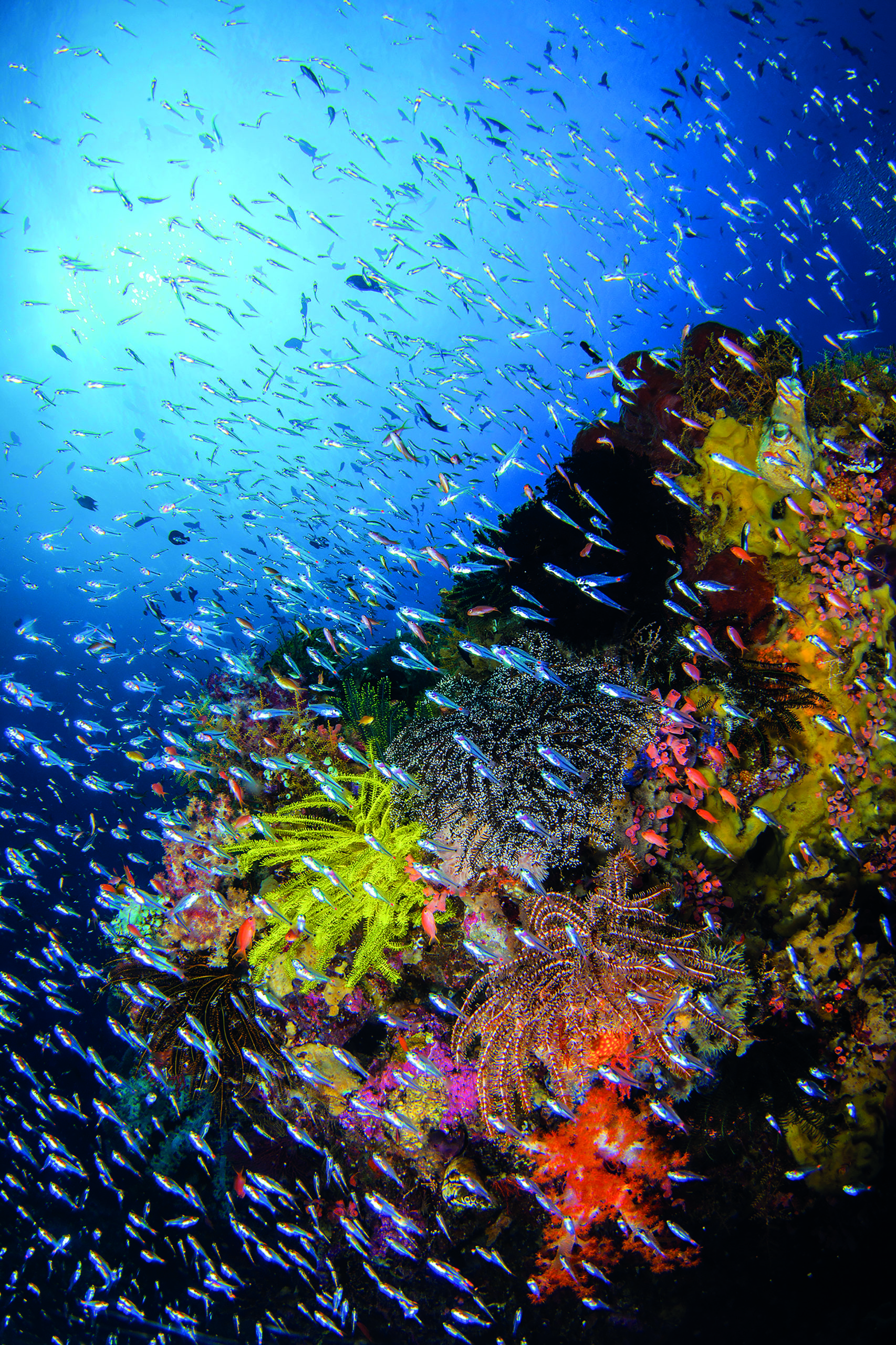 Aptly-named Zoo is known for its abundance and diversity of marine life. The site itself begins with a shallow coral garden very suitable for snorkeling that rolls down a steep slope to depths well past 100ft. The reef's staghorn, scroll corals and seafans are havens for a range of macro subjects from frogfish and leaf scorpionfish to pygmy seahorses, ghost pipefish and the unique mushroom pipefish, often found among the wavy tentacles of mushroom corals. A close inspection of the numerous barrel sponges will produce one or more hairy squat lobster. Zoo turns into a special place at night as nocturnal animals such as cuttlefish and bobtail squid come out for the hunt, and numerous species of lionfish scour the reef, including the elusive twinspot lionfish.
Another favorite with critter watchers and macro photo buffs is Teluk Maya, which features a sloping reef profile similar to Zoo, but with more of a bowl shape that creates a large sand-bottomed amphitheater. Adding to the site’s topographic diversity is a vertical drop-off adjacent to the sandy basin that plummets straight down from a depth of 78ft, and is riddled with deep overhangs. For critter watchers, in addition to a resident school of batfish, Teluk Maya is great for a variety of pipefishes including newly discovered species of pygmy pipehorse, the odd Pegasus seamoth, as well as a number of invertebrates - and that’s just the top 60ft.
There's no shortage of walls in Wakatobi waters, and many of these vertical ramparts start as shallow as a mere foot or two from the surface and plunge well below depths of 300ft. Some of the most dramatic are found at the Sawa Reef system. Two perennial favorites in this area are Cornucopia and Lorenzo’s Delight, which was named after Wakatobi’s founder Lorenz Mäder. Like most sites on the Sawa reef, both begin with a shallow coral flat 4ft-6ft deep, then drop with vertical abruptness into the void. The ‘Great Wall of Cornucopia’ as it is often called features a multiple of overhangs dripping with soft corals. At Lorenzo’s Delight, the signature trait is the outsized red sea fans, some with a circumference large enough to cover a living room floor.
The site known as Roma always takes top billing and for a lot of reasons. This large seamount rises to within 6ft of the surface and is topped by a beautiful grove of potato coral. To one side there is a huge area of pavona coral following a downward grade. To the other, the profile takes a more-sudden drop-off fringed with table corals, soft corals and fans. In between are large barrel sponges and turbinaria corals, one of which is a massive formation 50 feet across that resembles a rose when viewed from above. As for marine life, if it lives in this region of Indonesia, you’ll likely find it here.
Farther afield, roughly an hour by boat is Blade. The underwater topography of this site is unlike any other, as it is made up of a series of small open-water seamounts fused together to form a narrow, elongated ridge that rises up to within a few feet from the surface, all connected by a lower ridge. Viewed from the side, the formation’s coral and sponge-covered profile resembles the edge of a giant serrated knife blade. Changing your perspective to looking down from above will reveal the extremely narrow nature of the formation, which is just a few feet across, with both sides dropping precipitously into the deep blue.
Aptly-named Zoo is known for its abundance and diversity of marine life. The site itself begins with a shallow coral garden very suitable for snorkeling that rolls down a steep slope to depths well past 100ft. The reef's staghorn, scroll corals and seafans are havens for a range of macro subjects from frogfish and leaf scorpionfish to pygmy seahorses, ghost pipefish and the unique mushroom pipefish, often found among the wavy tentacles of mushroom corals. A close inspection of the numerous barrel sponges will produce one or more hairy squat lobster. Zoo turns into a special place at night as nocturnal animals such as cuttlefish and bobtail squid come out for the hunt, and numerous species of lionfish scour the reef, including the elusive twinspot lionfish.
Another favorite with critter watchers and macro photo buffs is Teluk Maya, which features a sloping reef profile similar to Zoo, but with more of a bowl shape that creates a large sand-bottomed amphitheater. Adding to the site’s topographic diversity is a vertical drop-off adjacent to the sandy basin that plummets straight down from a depth of 78ft, and is riddled with deep overhangs. For critter watchers, in addition to a resident school of batfish, Teluk Maya is great for a variety of pipefishes including newly discovered species of pygmy pipehorse, the odd Pegasus seamoth, as well as a number of invertebrates - and that’s just the top 60ft.
There's no shortage of walls in Wakatobi waters, and many of these vertical ramparts start as shallow as a mere foot or two from the surface and plunge well below depths of 300ft. Some of the most dramatic are found at the Sawa Reef system. Two perennial favorites in this area are Cornucopia and Lorenzo’s Delight, which was named after Wakatobi’s founder Lorenz Mäder. Like most sites on the Sawa reef, both begin with a shallow coral flat 4ft-6ft deep, then drop with vertical abruptness into the void. The ‘Great Wall of Cornucopia’ as it is often called features a multiple of overhangs dripping with soft corals. At Lorenzo’s Delight, the signature trait is the outsized red sea fans, some with a circumference large enough to cover a living room floor.
The site known as Roma always takes top billing and for a lot of reasons. This large seamount rises to within 6ft of the surface and is topped by a beautiful grove of potato coral. To one side there is a huge area of pavona coral following a downward grade. To the other, the profile takes a more-sudden drop-off fringed with table corals, soft corals and fans. In between are large barrel sponges and turbinaria corals, one of which is a massive formation 50 feet across that resembles a rose when viewed from above. As for marine life, if it lives in this region of Indonesia, you’ll likely find it here.
Farther afield, roughly an hour by boat is Blade. The underwater topography of this site is unlike any other, as it is made up of a series of small open-water seamounts fused together to form a narrow, elongated ridge that rises up to within a few feet from the surface, all connected by a lower ridge. Viewed from the side, the formation’s coral and sponge-covered profile resembles the edge of a giant serrated knife blade. Changing your perspective to looking down from above will reveal the extremely narrow nature of the formation, which is just a few feet across, with both sides dropping precipitously into the deep blue.






